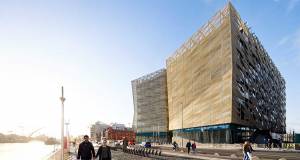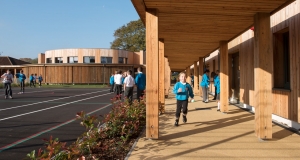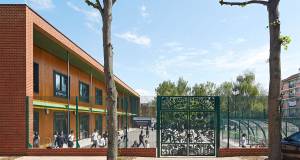- Large Buildings
- Posted
New thoughts on high-rises
An Bord Pleanála has been marking the planners' cards on a fairly consistent basis over the past few years, citing all sorts of reasons for overturning the decisions they have made. But the main reason usually relates to the absence of any planning framework under which high-rise proposals could be justified, including the 16-storey tower initially proposed by Arnotts. The department's heritage division, after a long period of enforced silence under previous ministers, seems to have been given more leeway by John Gormley to intervene in the planning arena. It characterised developer Seán Dunne's scheme for the Jurys-Berkeley Court site in Dublin's Ballsbridge as "excessively high".
Despite all the bluster during the boom about going higher, Liberty Hall, which was completed more than 40 years ago, is still the tallest building in Dublin. An Bord Pleanála departed from the advice it received from the department and, more explicitly, from one of its own senior planning inspectors to grant permission for the redevelopment of the Clarence Hotel on Wellington Quay; it would appear that the board was dazzled by the Foster + Partners' design. The end-result, if it is realised, will have an enormous impact on the Liffey Quays. Now, the new owners of the Bank of Ireland headquarters on Baggot Street are hoping to win approval for plans to add two floors to what is already a bulky building in a highly sensitive context.
It is noteworthy - and very welcome - that Dublin City Council's planners are reviewing their draft policy document following the overwhelmingly negative reaction it received at a series of public consultation sessions in June. Michael Stubbs, assistant city manager in charge of the planning department, told The Irish Times that the draft would be substantially changed before it was presented to the council's planning and economic development committee in September, to reflect public opposition to random high-rise proposals and place more emphasis on achieving higher densities in the context of statutory local area plans (Laps). Indeed, in a democratic society, public representatives must be involved in framing all such plans - as they are in the case of Laps - instead of leaving crucial decisions to unelected officials.
© 2008 The Irish Times
Related items
-
 Saint Gobain launches online technical academy
Saint Gobain launches online technical academy -
 Ireland's new central bank hits nZEB & BREEAM outstanding eco rating
Ireland's new central bank hits nZEB & BREEAM outstanding eco rating -
 Ground-breaking housing scheme captures one developer’s journey to passive
Ground-breaking housing scheme captures one developer’s journey to passive -
 Welsh school fuses passive & eco material innovation
Welsh school fuses passive & eco material innovation -
 East London passive school promotes active learning
East London passive school promotes active learning -
 International selection - issue 11
International selection - issue 11

